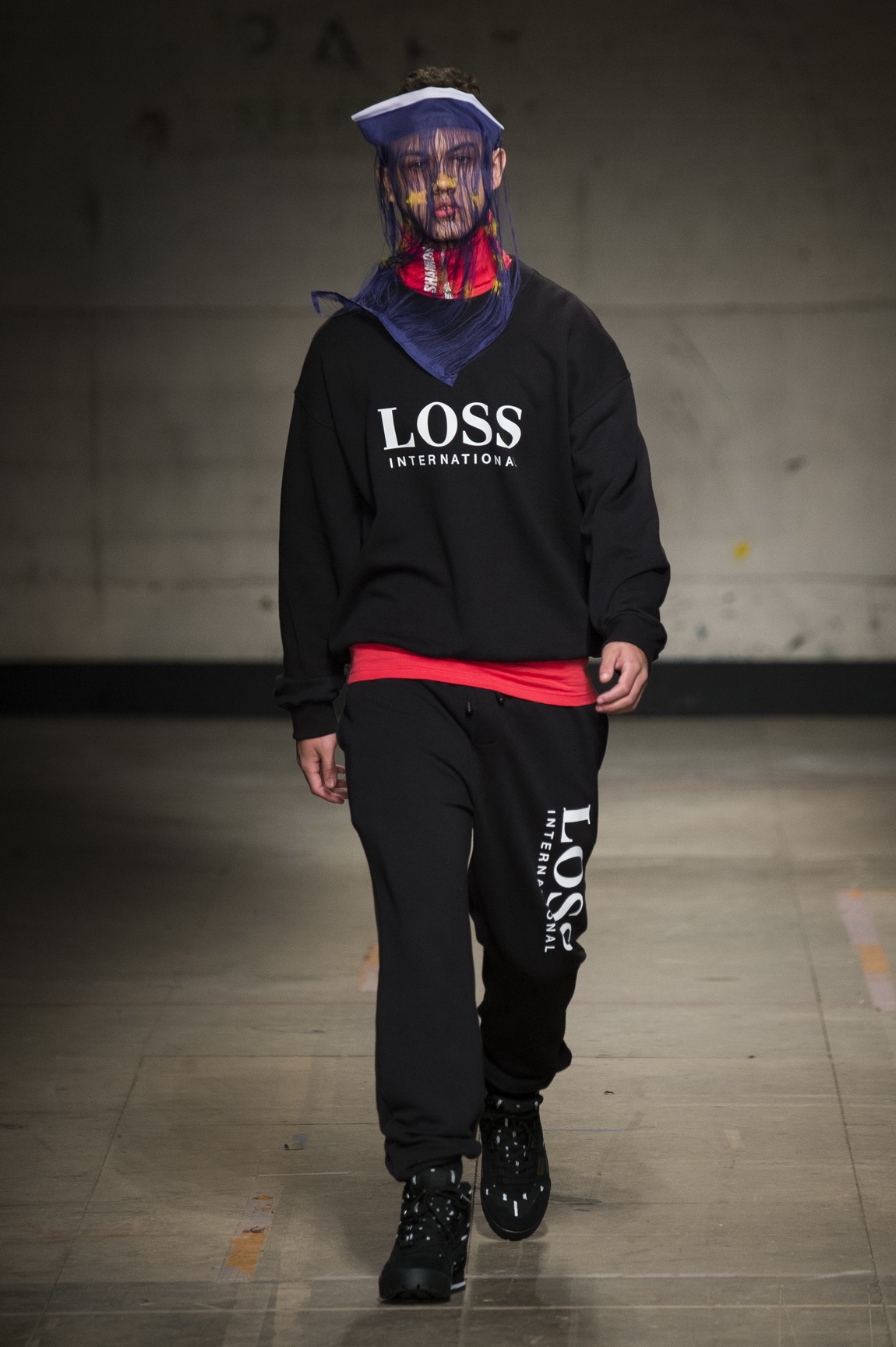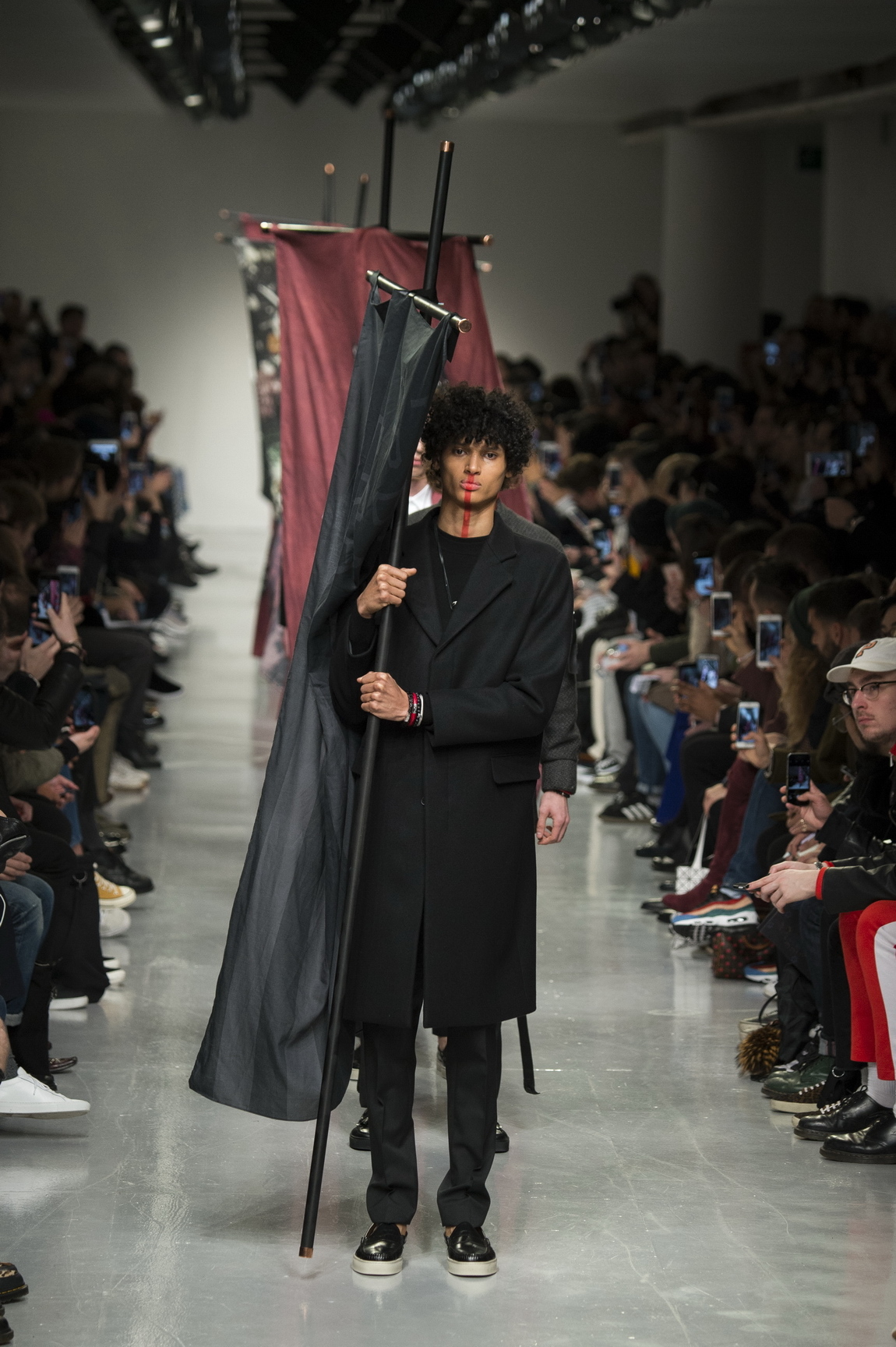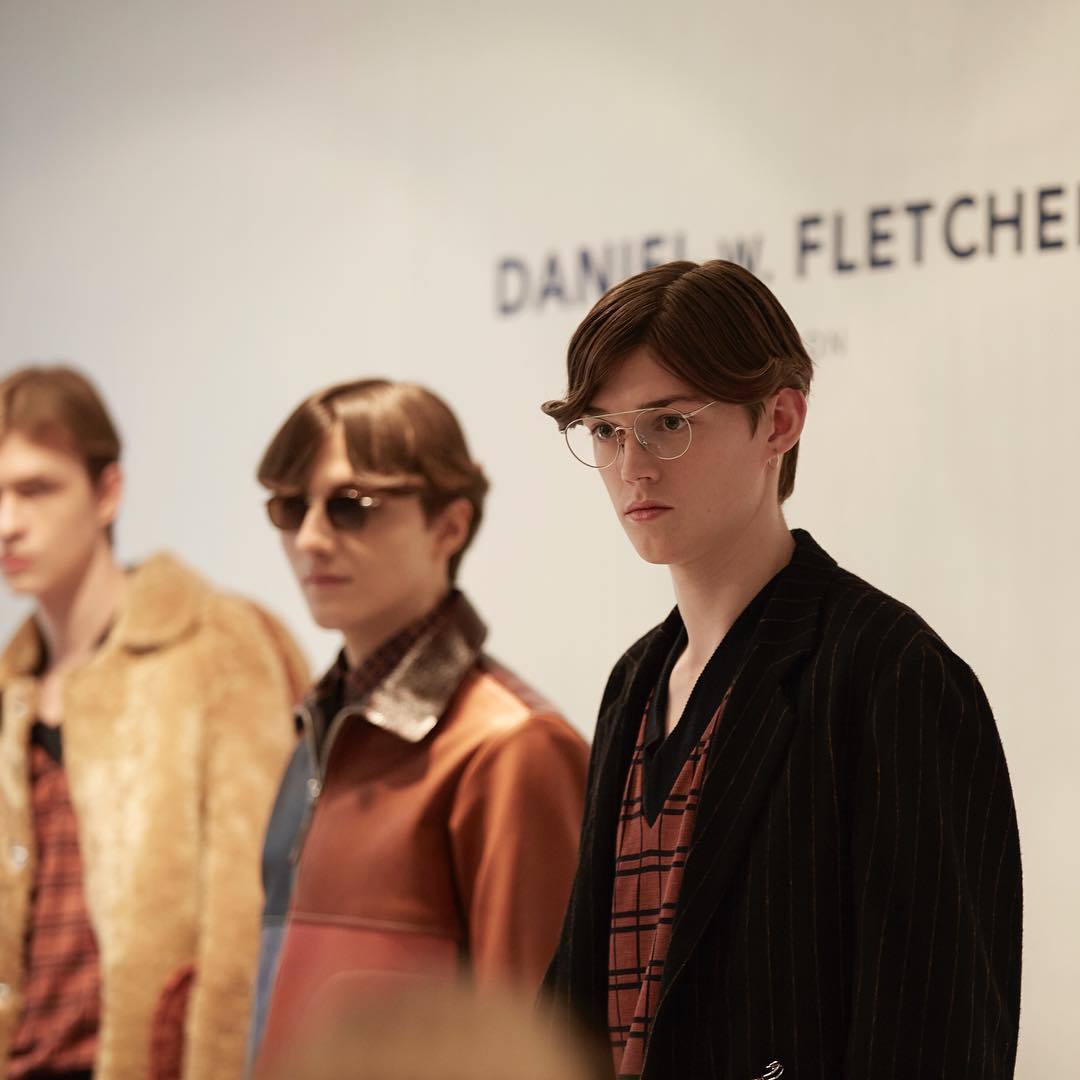Because the fall/winter men’s shows take place just on the other side of New Year, collections often become designers’ versions of the Queen’s Christmas Message. In the words of another British ruler, who would have turned seventy today had he not been a casualty of a deadly 2016, the question on everyone’s lips backstage is, quite simply, “Where Are We Now?””It’s been a really tough season in every aspect, for everyone,” Christopher Shannon established after his morning show, which turned big-business fashion branding into comments on the time we live in, from the familiar Calvin Klein cK t-shirt transformed into “cS: Constant Stress” to the Boss logo altered to read “Loss International.” The epic tumult of last year will doubtlessly spawn a season of either acute escapists or stern realists, and for Shannon it was very much the latter. “All I’ve seen is builders and couriers, because they’re the people I see every day going to the office in Dalston. So I made a rule I didn’t want to make any odd clothes. All the clothes had to be clothes, because everything is a staple — and that’s kind of who I am, anyway. I’m not in the mood for a fantasy,” he explained, nodding at the knowledge he’s gained of his customer through recent e-commerce ventures. Creativity might flourish in times of political distress, but for London’s famously struggling designers, 2016 has also been a reality call for building strong businesses.

“There’s a time for change: it’s now,” Lou Dalton asserted at her slick presentation in the bright day-lit surroundings of the new St. James’ Market building, which marked her departure from the runway format. “I wanted to take it back to the core of what we do, because sometimes you can get completely ambushed by doing a show. You can lose your focus. And I wanted folks to be able to see what I do. Often they say, ‘Lou’s really good at detail,’ and you miss it — so this was just being able to do it in a really intimate way and a beautiful location.” It enabled guests to get up close and personal with Dalton’s superb craftsmanship, backed up by motifs on garments by the artist John Booth and her partnership with John Smedley, which allows the designer to go all out with the distinctly British knitwear in which she excels. For Dalton there was no trying to hide it: she meant business — bigger business — but the kind which in turn provides less creative constraint. “It’s honing in on what we’re selling and who I am. I think a lot of us are thinking that way,” she said. “I want to be here having conversations with you two and three seasons from now, and this is about that. I want it to be personable and I want you to want to wear it.” Mission: accomplished. It was a sentiment echoed at Cottweiler where Matthew Dainty and Ben Cottrell put on their first out of a three-show marathon over the next two weeks.

On Thursday they headline Pitti Immagine in Florence with a special presentation, followed by their participation in the Woolmark show during haute couture in Paris. “This season we put a lot less constraints on ourselves in terms of the design process. We were a lot freer,” Cottrell said after their glow-in-the-dark experience, which featured genius neon-lit bellybutton piercings and all the seedy, sexy sportiness that’s paved the way for a season that’ll see Cottweiler on the show schedules of three fashion cities. “We were studying artificial nature in modern environments, and we wanted to create this show set that kind of represented how communities build themselves around shopping centers and try to insert nature into it,” Dainty explained, for a brief moment taking us out the 2016 funeral procession that defined the Saturday of London men’s shows. Matthew Miller’s flag-bearing finale literally looked like a cross between a mourning march and a fascist parade of the interwar period. But even if the collection — titled Fear Itself — was decidedly black, the designer insisted there’s light at the end of the tunnel. “It’s pessimistic about the times, but optimistic that you can change what’s going on. The media and the press create this fear generation, who are scared to do anything. They bombard you with images of fear. It’s control,” he said backstage.

Day two in the Big Brother house of fashion week was very much defined by London designers’ literal approach to the political and social messages they aim to convey. Contrary to the older guard of designers, the young generation has no desire to be elusive when they’re talking about their work. There’s no veiling the political agenda or discreetly hinting at stuff, and nothing says more about the aftermath of Hurricane 2016 than that. Agi & Sam staged a black and red youth revolt, masking models in caps and scarves that seemed to be featuring anti-Brexit slogans of fellowship — but the mood was anything but cuddly. “Politics has become part of my collections,” Daniel W. Fletcher said at his presentation earlier in the day, cementing the straightforwardness of fashion’s new blood. For his debut last season, the young designer staged a Brexit protest outside 180 the Strand — the big venue at London Fashion Week Men’s — and this season marked a perhaps more sophisticated take on the same idea. “I feel I should be using this to create something positive. If I can open up the discussion and engage people in politics and make them aware of what’s happening, that’s something I’ll continue to do,” he explained.

“I wanted to start 2017 on a positive note. We had such a turbulent year of that step back to rightwing politics and xenophobia and I feel like the voice of youth is often overlooked and ignored, as was the case with the Referendum.” Fletcher’s method? “Playing the suits at their own game.” Through tailoring and sports elements, he sought to invoke the sense of unity created by teams in uniforms. “This is me creating my uniform for youth to unite people.” It was a strong sophomore collection for Fletcher, and the promise of a bright future for the newest addition to London’s menswear scene.

Credits
Text Anders Christian Madsen
